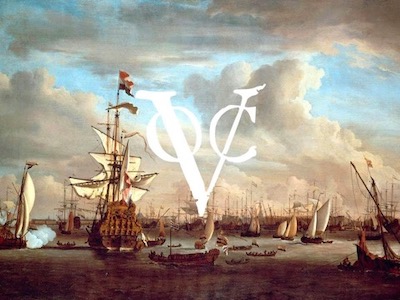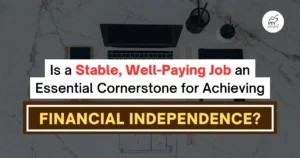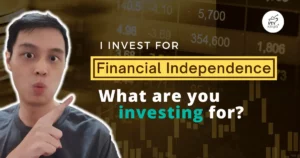8 Lessons Learnt From The World’s First, Oldest and Official Listed Company

Stock ownership is common nowadays. It denotes a fraction or percentage of ownership of a company by an individual.
These days, you can pick up a stone and throw it at anyone, chances are maybe 2 out of 3 people aged between 30 and above you hit have bought some shares in a company. Buying shares of listed companies is now simple and easy with just a click on your stock purchasing platform.
But did you all know what was the first company that was listed officially in a public stock exchange and when was it???
In the year 1602, more than 400 years ago from the year 2019, was the founding of possibly the greatest company in its era and also today – The Dutch East India Trading Company (VOC)
The Dutch East India Trading Company (VOC) started off as a trading company by obtaining a 20-year monopoly on trade with the East Indies, trading spices and other fine materials. As the business grew, the company ventured into larger and longer trade routes, shipbuilding, production and farming. Eventually, the company grew bigger and bigger, with different office branches all around key trading ports.
It enjoyed a vast and superior business moat as at that time, it was one of the only companies that could source for exquisite and rare items from the East, and going through tough perilous sea voyages.
In the year 1669, barely less than 100 years of its introduction, VOC became the richest company the world has ever seen, with more than 100 merchant ships, an armada of warships for naval warfare, 50,000 employees, a private army for skirmishes and battle. In its peak, the company was capable of paying a dividend 40 to 60% yield against its original issued price
Why did the VOC became so successful and rich?
1. Monopoly
The VOC was initially granted a 21 year trading monopoly by the Dutch government. This prevented other parties to enter and compete with the company. Even though the grant lasted for 21 years, eventually it grew so strong and was so many steps ahead of any companies that wanted to copy their business model
2. High Profitability
There were times when some voyages made 400% of profits. But on an average, the VOC managed to make on average 18% of profit during its golden era. That’s a mouth watering profit margin!
3. Competent and smart management
Europe was crazy for Asian spices back in the days. But Asia was only interested in precious metals gold and silver from Europe. And the bad news was only Spain and Portugal had loads of precious metals to trade with Asian traders for spices. Jan Pieterszoon Coen, hatched a plan to create a trading surplus. By creating an intra-Asia trade system, the VOC managed to trade off its supplies into other goods and then fulfilling other barter trades to eventually obtain spice. And then shipping all these spices back to Europe, without needing gold or silver which they lacked!
4. Diverse and complementing business segments
It all started with trading spices. Then slowly VOC started to venture into other business segments. Ship building, setting up plantation, warfare and looting are all the business segments that positively contributed to VOC’s business. They also complemented each other eventually, as planting and growing spices in Asia, harvesting and shipping them back to Europe, meant VOC eventually captured the whole supply chain of the spice trade.
Quite literally from farm to fork!
Alas the VOC was not destined to last till today. Around the year 1730, barely 150 years since its formation, it began to face headwinds and challenges that would eventually saw the company to be eventually classified as a glorious page of Dutch history.
What caused the downfall of the VOC?
5. Disruption and competition
Even though the VOC had the Dutch government’s monopolistic charter, but that does not prevent competition from other countries. They eventually faced disruptions from the British East India Trading Company (EIC) and Danish East India Trading Company.
6. Inefficiencies of its operations
The VOC has long set up a controlling Asian hub in Batavia (which is located in modern day Indonesia). Their modus operandi was to collect all Asian goods in Batavia and then shipped everything back Europe. EIC was directly shipping tea from China back Europe without making a pit stop.
7. Unsustainable Dividend Payout Policy
Dividends are a fraction of the net profit that a company pays out as a reward to its shareholders. When the company pays out more than it earns, eventually the money a company holds will decrease along time until the company runs dry of cash. Starting from the 1730s, the VOC paid out more dividends than what it earned, and it had to restructure its capital holdings between its Asia and Europe offices
8. Inability to Weather through Crisis
Even though the VOC faced problems, perhaps the biggest cause of its demise was the Fourth Anglo-Dutch war. The Dutch, at war with the British, saw the VOC’s fleet decimated. Half of its ship fleets gone, valuable cargo looted by the British, left the VOC facing an end it could not reverse its fortune.
The VOC is a classic example of how companies in the modern era we live in can rise and fall.
A great company always have a fantastic business model, which can help it attain high profitability. Coupled with brilliant and shrewd management, a company will be able to go far and withstand the 100 years test.
To ensure a company is able to last for 100 years, it must be able to fend off competition. Prudent cost management and expansion plans must also be in place to ensure retained earnings increase along the years, and also be able to withstand disruptions.
Based on the rise and fall of the VOC, are you able to gain valuable insights and tips on how to sieve out great investing opportunities from the haystack?






